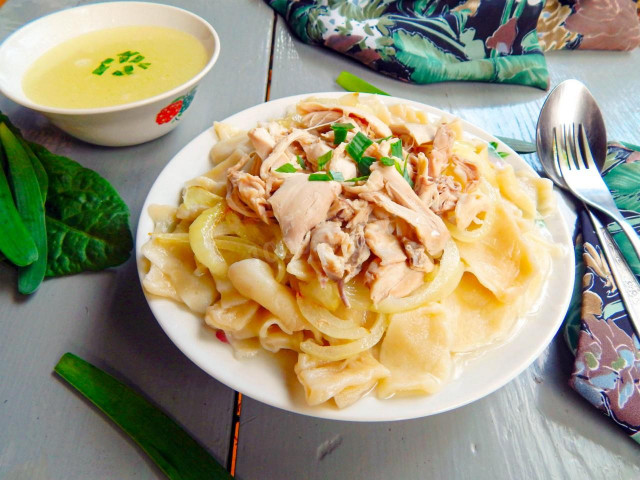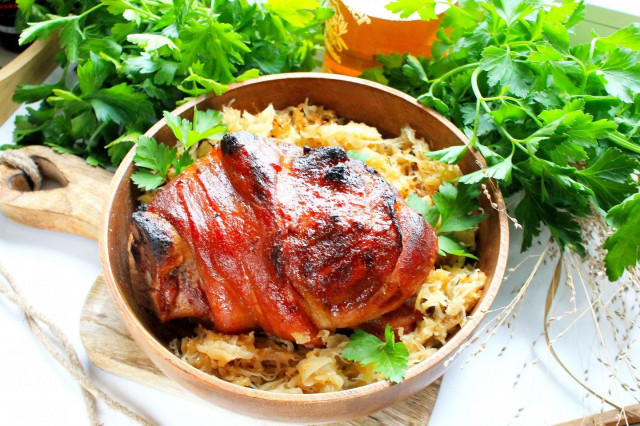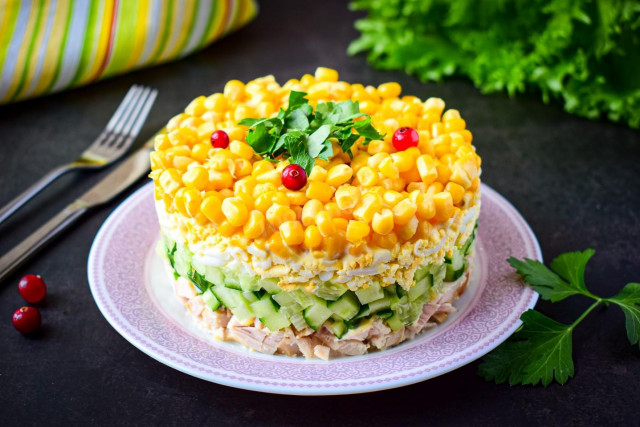Composition / ingredients
Step-by-step cooking
Step 1:

How to make beshbarmak from chicken? Prepare the ingredients. If you are going to cook a dish for a large family, then use a whole chicken. If you want to cook beshbarmak for a sample, it is better to take any part of the chicken and, accordingly, reduce the amount of other ingredients. I took three chicken thighs.
Step 2:

First of all, cook the chicken broth. How to cook chicken broth? Wash the chicken, pour cold water in a saucepan, add salt and put it to cook over medium heat. When the broth boils, reduce the heat, remove the resulting foam with a slotted spoon. Add the bay leaf, black pepper and cook until fully cooked, about 2 hours on low heat.
Step 3:
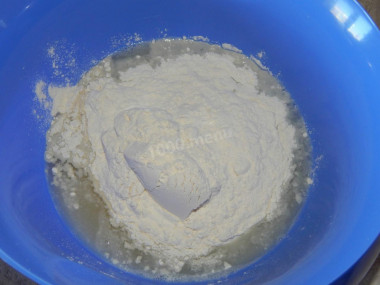
In the meantime, do the dough for juicier. How to make dough? In a bowl, beat the eggs, add salt. Shake the eggs with a fork. Pour in the water, mix the resulting mixture. In portions, start pouring the sifted flour, kneading the dough. First knead with a fork, when it becomes thick — with your hands. The amount of flour may differ from what is stated in the recipe. Look at the status of the test.
Step 4:
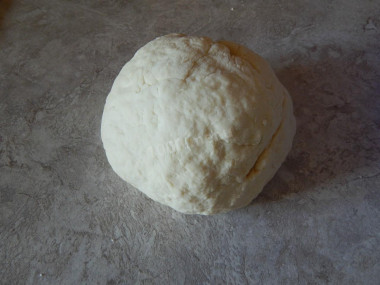
It should become tight enough, smooth and not sticky to the hands. Wrap it in plastic wrap and put it in the refrigerator for half an hour.
Step 5:
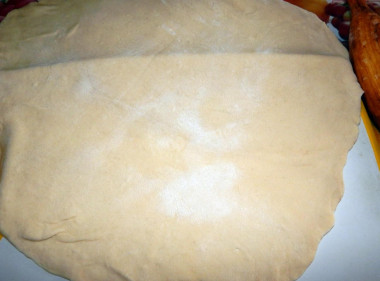
Sprinkle the work surface with flour. Remove the dough from the refrigerator, roll it out with a rolling pin into a thin layer, about 2 mm thick. Due to the fact that the dough has rested a little before work, the gluten contained in the flour has developed well in it. It is responsible for elasticity and stickiness. A good dough practically does not stick and does not tear.
Step 6:
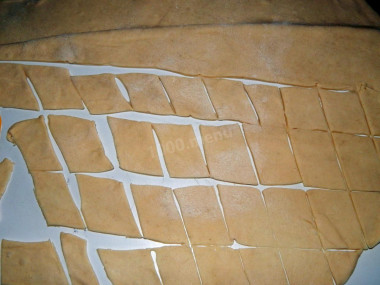
Cut the dough into strips, which then divide into arbitrary squares or rhombuses. Sprinkle them with flour and leave to dry for 15 minutes. Meanwhile, the chicken is ready. Remove it from the broth, carefully separate the meat from the bones. Only meat is needed for serving. Pour half of the broth into another container, straining it through a sieve. Leave the second half of the broth in the same saucepan, it will be needed for boiling juicier.
Step 7:

Heat a tablespoon of vegetable oil in a frying pan over low heat and fry the onion in it until lightly golden. Fry the onion for a short time, it should remain slightly crispy.
Step 8:
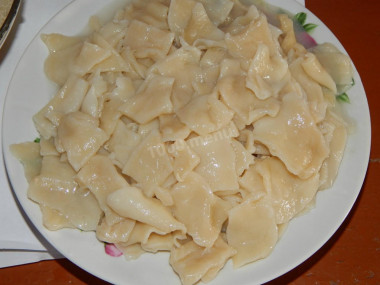
Bring the broth left for juicier to a boil. Run the pieces of dough into it in parts. Immediately stir them with a spoon so that the juices do not stick to the bottom of the pan. Cook the noodles for 7-8 minutes on low heat, then put it in deep bowls with a slotted spoon.
Step 9:

Put the onion on the boiled juicy ones, and meat on top of it. Pour the broth into small bowls. At home, beshbarmak is eaten with hands, washed down with broth from bowls. You can also pour beshbarmak broth directly in a cup, you will get something like chicken soup. Serve beshbarmak with your favorite greens. Bon appetit!
"Beshbarmak" translates from Turkic as "five fingers", implying a way of eating this dish, which Kazakhs eat without a fork, directly with their hands.
Be sure to wash the eggs before use, as even the seemingly clean shell may contain harmful bacteria. It is best to use food detergents and a brush.
Be prepared for the fact that flour may need more or less than indicated in the recipe. Focus not on the amount of flour, but on the desired consistency of the dough. To avoid mistakes, read about flour and its properties!
For cooking, it is better to use filtered or bottled water that is neutral to taste. If you use tap water, keep in mind that it can give the dish an unpleasant characteristic taste.
Caloric content of the products possible in the composition of the dish
- Category I chicken - 238 kcal/100g
- Chicken of the II category - 159 kcal/100g
- Chicken, flesh without skin - 241 kcal/100g
- Chickens - 140 kcal/100g
- Bay leaf - 313 kcal/100g
- Vegetable oil - 873 kcal/100g
- Black pepper peas - 255 kcal/100g
- Salt - 0 kcal/100g
- Water - 0 kcal/100g
- Onion - 41 kcal/100g
- Wheat flour - 325 kcal/100g
- Chicken egg - 80 kcal/100g

